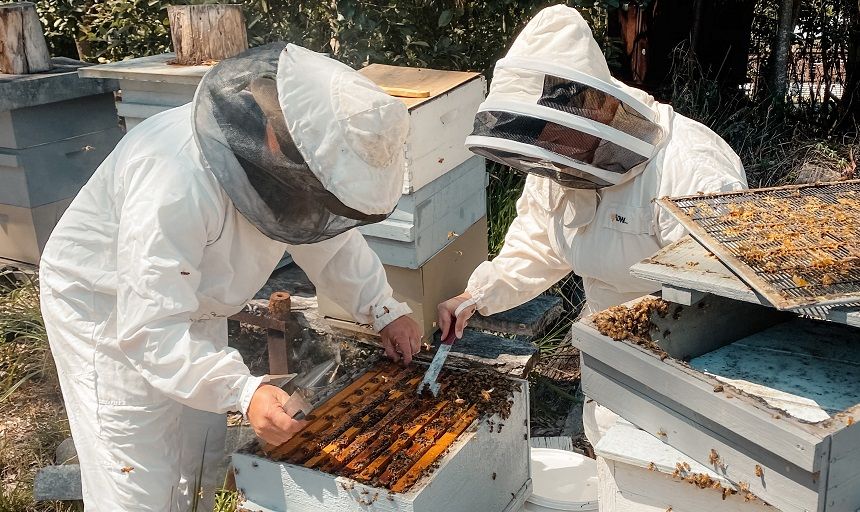Your summer beekeeping checklist
Summer is a busy time for bees. Long, warm days and readily available nectar supplies make for intensive honey production and increased egg-laying. Colony numbers peak and bees spend much of their time building and filling new comb.
For beekeepers, summer is a busy time as well. Although the chance of a swarm is highest in spring, it’s still a possibility in summer – especially if the hive doesn’t expand to meet the colony’s space needs – so keepers need to be on the lookout for signs of swarming. Supers should be added when needed, and excess honey collected. In parts of Australia, beekeepers also need to keep an eye on the temperature and protect their hives from the fierce summer heat.
Here’s your summer hive checklist:
Inspect regularly
During summer, you should open the hive for an inspection every three weeks. Choose a warm, still day, and inspect in the middle of the day when fewer bees are in the hive. Count full supers, check brood, look for signs of pests or disease, and take notes so you can compare next time you check.
Watch for swarm signs
When bees run out of space for brood or honey, the colony will prepare to raise a new queen, and the old queen will leave to find a new hive – along with half the population. You don’t want to lose half your bees in the middle of the season, so keep an eye on swarm behaviour when you inspect. The most significant sign is queen cells in the brood box – these are larger, misshapen cells at the edges of the frame.
Here’s how to prevent a swarm if you do notice queen cells.
Check the queen
Your queen bee is essential for the health of the hive. Without her, there’s no brood, no new bees to produce honey, and the remaining colony could drift apart without the influence of her hormones. That’s why it’s so important to check on the queen every time you open the hive.
Make sure she’s still there. The quickest way is to check for eggs and larvae, this quickly shows that she’s present and laying. Keep an eye on brood pattern too - is it consistent or patchy? Disease or age can affect your queens ability to lay vigorously and consistently. If you are concerned and want to re-queen the hive, get onto it quickly – most breeders only sell queens until the end of February, and you don’t want to miss out.
Letting your hive rear their own queen is an option however this will create a brood break which is a period of time when you'll have no new bees adding to the population of your hive, this can significantly affect your crop.
Add supers as needed
Giving your bees plenty of room to move is the best way to stop swarming before it happens. Although every beekeeper has a way of gauging the need for new supers, most agree that sooner is better than later – don’t wait until the hive is heaving with honey or brood. Instead, install a new super when around seven of the 10 frames in your current super are full.
Cool and ventilate
The harsh Aussie summer can be too much even for heat-loving bees. Keep your hives cool by placing them in a shaded area, using white hive roofs to reflect the light, adding ventilation holes towards the top of the hive and using a mesh or vented Hive Doctor Smart bottom board for extra airflow.
Find out more about looking after bees in the heat here.
Maintain a water supply
Bees drink a surprising amount of water, especially when it’s hot. If you don’t have a natural water source available, place a large trough or water container near your hives. Include rocks or pebbles for bees to land on, and make sure to refill regularly.
Harvest surplus honey
Traditionally, beekeepers harvest honey all at once at the end of summer, but some keepers choose to harvest excess honey throughout the season, breaking up the job and giving the bees more room to grow. Harvesting honey involves a bit of equipment and practice, but it’s pretty straightforward. Get the full guide here.
Whenever you choose to harvest, make sure your bees have a good supply of honey left to see them through the winter. In Australia, most beekeepers recommend leaving around 18kgs of honey – or seven to eight full depth frames.
Get busy in the buzzy summer
Summer is a busy and exciting time for beekeepers. You get to see your hives bustling with activity, watch honey stores grow before your eyes, and finally enjoy your delicious harvest.
Want to know more about the ins and outs of summer beekeeping?Get in touch with the expert team at Ecrotek now.

